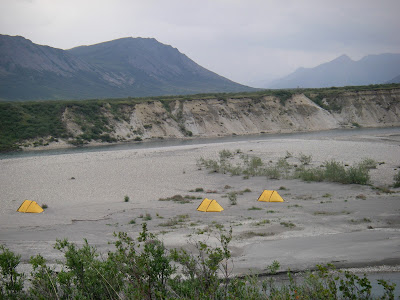BLOG 32. USFS/Leave No Trace Video
by
Cliff Jacobson
The Forest Service video, “Leave No Trace” is required viewing for everyone who goes to the Boundary Waters. The film contains a lot of good information, but it also has some advice that is silly or dead wrong. Heading the “silly” list is the admonition to leave your axe at home. The message is that a Swiss Army knife and jack-knife pruning saw are all you need to make a cheery blaze on a rainy day. If you’ve spent much time in the Boundary Waters you know that on most campsites, all the good wood has been picked over. Making fire often means splitting a chunk of log to get at the dry heartwood in the center. For this, you need a full frame saw and a splititng tool (an axe of some sort).
Here are three more “silly points” from the video:
1. “Don’t trench your tent (I agree); it causes needless soil erosion; besides, modern tents with built-in floors will keep out flowing ground water.” That alone is worth a chuckle. Wouldn’t it be better to just ask everyone to use a plastic groundcloth inside their tent? (rationale: see blog #2, Old ideas die hard).
2. Avoid brightly colored gear—it takes the “wild” out of wilderness. Yeah, and it also complicates emergency rescue and makes your photos not worth viewing.
 |
| Choose brightly colored gear for safety. Noatak River, Alaska |
3. Tree your food packs every night. Ok, enough; we’ve run this one to death in previous blogs and writings.
Completely wrong, is the recommendation to throw rocks at a bear (“and try to hit him!”) that comes into your camp. We did this once on a canoe trip down the Fond du Lac River in Saskatchewan and that bear nearly had us for dinner. She chased everyone out of camp and forced one man into the lake(!). Then, after we’d put to sea and had rounded a point, we saw her perched on a rock, chest-deep in water, clacking her teeth and woofing at us. I believe this bear would have killed us had we stayed around. Yes, there IS a time to throw rocks at a bear, and that is when the bear is attacking someone—i.e., human life is in danger. Otherwise, don’t do it! The personality of bears, like humans, runs the gauntlet from “gentle and nice” to “extremely mean!” Antagonize a mean-spirited bear and he may come after you!
 |
| Noatak River, Alaska. Note the ugly steel "bear barrels" in the background |
If you canoe the Noatak River, which flows through ANWR (Arctic National Wildlife Refuge), you’ll be treated to the Alaskan version of the “Leave No Trace” video. The film begins by telling you to camp on “durable ground”—that is, ground that won’t be flooded by heavy rain. But the camp that’s pictured in the video is pitched on a gravel bar which is definitely not a “durable” surface. Indeed, durable sites on the Noatak are a long ways from the river. Unless you are willing to haul your gear 100 plus yards up a high hill, you’ll camp on non-durable gravel close to the river.
Here’s the recommended procedure for campfires, as given in the video:
1. Make your campfire on gravel, close to the river.
2. First, place a large square of plastic on top of the gravel then pile a thick layer of gravel on top of the plastic. Build your fire on top of the gravel.
3. Allow your campfire to burn out completely then lift the plastic and toss the ashes into the river so as to leave no trace. Pack the plastic and keep it handy for future fires.
Okay, picture yourself doing this for every campfire you build. And who’s the lucky one who gets to pack the sooty plastic sheet that may be wet and sloppy from rain or a water-doused fire? I doubt that any feds who canoe the Noatak do this! Wouldn’t it be better to simply say: “Burn your fire down as much as possible, then before you leave, toss the burned remains into the river.” Given the small amount of traffic on the Noatak, and the fact that spring rains will completely flood the gravel bars, there is little basis for this recommendation.
Then there’s the heavy steel food barrels that paddlers are required to carry. These “bear barrels” are not waterproof and they don’t have carrying handles or grab loops. They are awkward, slippery, cold to the touch and they roll around. There is no way to portage them, save for throwing them up on your shoulder, pirate style. Two barrels at most, will fit in a 17-foot canoe and each barrel will nearly fill the space between the yoke and closest thwart. I admire those who will tote these heavy, food-filled metal barrels 100+ yards up a hill to a “durable surface” campsite.
 |
| Another example of camping on a "non-durable" surface |
Federal authorities mean well and they try to do the right thing. Indeed, most wilderness regs make sense and should be taken seriously. But silly “feel good” rules are quite another matter.
Cliff Jacobson
www.cliff-jacobson.com




No comments:
Post a Comment